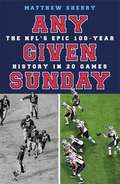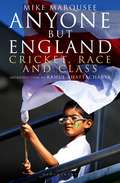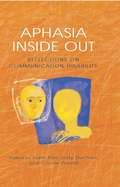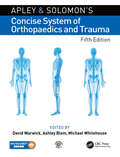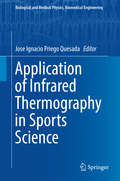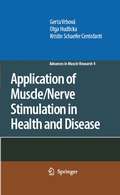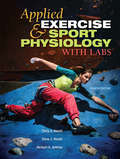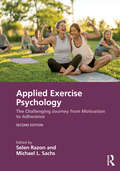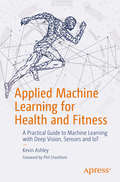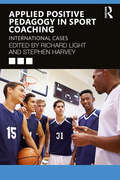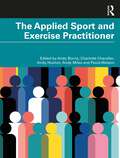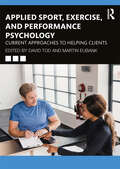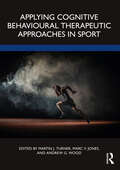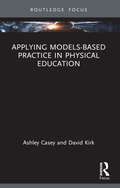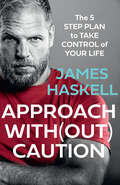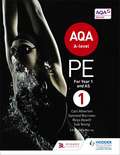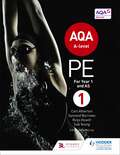- Table View
- List View
Any Given Sunday: The NFL's Epic 100-Year History in 20 Games
by Matthew Sherry17th September 2020 will mark the centenary of the National Football League. It will reach that landmark as a behemoth, an all-encompassing conglomerate that is the most lucrative sports league in the world - and also the dominant pop culture entity in the United States. The NFL is also making considerable gains worldwide. The International Series has been heading to London since 2007 with incredible sell-outs at the four games in 2019 at Wembley and the Tottenham Hotspur Stadiums.This may lead some to believe the league has always been a roaring success story. History contradicts that reputation, for the NFL of today is a by-product of the humblest beginnings. It is a rocky road filled with genius detours and wrong turns; with heroes and villains; and, most importantly, with thousands of games. Any Given Sunday will detail some of the biggest of those, beginning with the first contest ever played in 1920 and working through to multiple key fixtures from last season. Each chapter will be complemented by countless interviews with some of the game's true legends, from Hall of Fame players and coaches to owners and executives; first-hand accounts from games, including multiple Super Bowls; and, finally, full access to the Pro Football Hall of Fame and NFL Films' extensive archives, including pieces not available to the public.Any Given Sunday takes readers from the boardrooms to the field, into the locker-room and inside the journeys of legends, providing a full snapshot of the NFL's epic first century.
Anyone But England: Cricket, Race And Class
by Mike MarquseeAnyone But England is a detailed exploration into the origins of cricket; the romance, cultural identity, hypocrisy, flaws of governance and glory of the game. Mike Marqusee, an American who fell in love with cricket when he moved to the UK in the 1970s, looks at the history of elitism and empire, and how race and class have always been issues in the game. Scrutinising the long saga of South Africa's exclusion from world cricket, Marqusee charts England's collusion with apartheid, and also details an eye-opening account of Pakistan's controversial 'ball-tampering' tour of England, which provoked intense debate amongst cricket fans about the role of both the media and racism in the modern game. Showing that supporting the game does not mean you need be blind to its flaws, Marqusee's passion and enthusiasm for cricket is threaded through every element of Anyone But England.Winner of the Aberdare Literary Prize, awarded by the British Society of Sports History, 1994Shortlisted for the William Hill Sports Book of the Year Award, 1994
Aphasia Inside Out (UK Higher Education OUP Humanities & Social Sciences Health & Social Welfare)
by Susie Parr Judith Duchan Carole PoundThis innovative new book brings together a number of different perspectives on aphasia, a communication impairment that can follow stroke. Contributors include people with personal experience of aphasia, as well as therapists, counsellors, educationalists, linguists and researchers who address issues of living with aphasia in their work. Whatever their perspective, whether personal, theoretical or professional, contributors reflect on and explore aspects of living with aphasia that have little place in conventional academic discourse. Accordingly, the chapters cover a range of issues, for example aphasia and the Internet, time and poetry. The diverse contributions are drawn together by an introductory chapter and a linking commentary. Aphasia Inside Out suggests new ways of thinking about aphasia, offers insights into the nature of the disabling barriers faced, and explores some creative possibilities open to people who live with communication disability. It will be a valuable resource for any professional or layperson who encounters aphasia in the course of daily life.
Apley and Solomon’s Concise System of Orthopaedics and Trauma
by David Warwick Ashley Blom Michael WhitehouseApley & Solomon's Concise System of Orthopaedics and Trauma is firmly established as the leading introductory textbook of orthopaedic practice and the principles of fracture and trauma management. Praised in previous editions for the systematic approach, balanced content and easy-to-read style, this fifth edition has been brought fully up to date under the direction of the new and distinguished authorial team, while remaining true to the teaching principles of Alan Apley and his successor Louis Solomon. Key features: Focused – on diseases and clinical signs with additional detail on anatomy where appropriate International – enhanced coverage of 'global orthopaedics' reflect the changing pattern of musculoskeletal disease and trauma around the world Relevant – provides helpful guidance on simple procedures without unnecessary operative detail Readable – increased emphasis on concise presentation Current – updates reflect developments in molecular biology, genetics and imaging technology This fifth edition remains the first choice for medical students, trainee surgeons and other health professionals seeking a convenient introduction to this large and complex subject and is a natural precursor to the more detailed coverage offered by its larger parent, Apley & Solomon's System of Orthopaedics and Trauma.
Apley and Solomon’s Concise System of Orthopaedics and Trauma
by David Warwick Ashley Blom Michael Whitehouse Richard GardnerApley & Solomon's Concise System of Orthopaedics and Trauma is firmly established as the leading introductory textbook of orthopaedic practice and the principles of fracture and trauma management. Praised in previous editions for the systematic approach, balanced content and easy-to-read style, this fifth edition has been brought fully up to date under the direction of the new and distinguished authorial team, while remaining true to the teaching principles of Alan Apley and his successor Louis Solomon. Key features: Focused – on diseases and clinical signs with additional detail on anatomy where appropriate International – enhanced coverage of 'global orthopaedics' reflect the changing pattern of musculoskeletal disease and trauma around the world Relevant – provides helpful guidance on simple procedures without unnecessary operative detail Readable – increased emphasis on concise presentation Current – updates reflect developments in molecular biology, genetics and imaging technology This fifth edition remains the first choice for medical students, trainee surgeons and other health professionals seeking a convenient introduction to this large and complex subject and is a natural precursor to the more detailed coverage offered by its larger parent, Apley & Solomon's System of Orthopaedics and Trauma.
Application of Infrared Thermography in Sports Science (Biological and Medical Physics, Biomedical Engineering)
by Jose Ignacio Priego QuesadaThis book addresses the application of infrared thermography in sports, examining the main benefits of this non-invasive, non-radiating and low-cost technique. Aspects covered include the detection of injuries in sports medicine, the assessment of sports performance due to the existing link between physical fitness and thermoregulation and the analysis of heat transfer for sports garments and sports equipment. Although infrared thermography is broadly considered to be a fast and easy-to-use tool, the ability to deliver accurate and repeatable measurements is an important consideration. Furthermore, it is important to be familiar with the latest sports studies published on this technique to understand its potential and limitations. Accordingly, this book establishes a vital link between laboratory tests and the sports field.
Application of Muscle/Nerve Stimulation in Health and Disease (Advances in Muscle Research #4)
by Gerta Vrbová Olga Hudlicka Kristin Schaefer CentofantiThe first evidence that electrical changes can cause muscles to contract was p- vided by Galvani (1791). Galvani’s ideas about ‘animal electricity’ were explored during the 19th and 20th century when it was firmly established that ‘electricity’ is one of the most important mechanisms used for communication by the nervous system and muscle. These researches lead to the development of ever more soph- ticated equipment that could either record the electrical changes in nerves and muscles, or elicit functional changes by electrically stimulating these structures. It was indeed the combination of these two methods that elucidated many of the basic principles about the function of the nervous system. Following these exciting findings, it was discovered that electrical stimulation and the functions elicited by it also lead to long-term changes in the properties of nerves and particularly muscles. Recent findings help us to understand the mec- nisms by which activity induced by electrical stimulation can influence mature, fully differentiated cells, in particular muscles, blood vessels and nerves. Electrically elicited activity determines the properties of muscle fibres by activating a sequence of signalling pathways that change the gene expression of the muscle. Thus, elect- cal activity graduated from a simple mechanism that is used to elicit muscle c- traction, to a system that could induce permanent changes in muscles and modify most of its characteristic properties.
Applied Exercise and Sport Physiology, With Labs: With Labs
by Dona J. Housh Terry J. Housh Herbert A. DeVriesApplied Exercise & Sport Physiology, Fourth Edition, presents theory and application in an appealing, balanced, and manageable format. By providing an essential introduction to the systems of the human body and covering important aspects of exercise and sport physiology, it will be a useful resource for students as they learn to become exercise science professionals, physician's assistants, physical therapists, physical educators, or coaches. It provides the right amount of practical information they will need to apply in hospitals, clinics, schools, and settings such as health clubs, youth sport leagues, and similar environments. The authors have carefully designed the material to be covered easily in one semester, in an introductory course, but the book can also serve as a foundation for advanced courses. Its 18 lab experiences are matched to relevant chapters and complement the topics covered; they allow readers to apply physiological principles to exercise and sport, provide opportunities for hands-on learning and application of the scientific principles, and often don't require complex equipment.
Applied Exercise and Sport Physiology, With Labs
by Terry J. Housh Dona J. Housh Herbert A. DeVriesApplied Exercise & Sport Physiology, Fourth Edition, presents theory and application in an appealing, balanced, and manageable format. By providing an essential introduction to the systems of the human body and covering important aspects of exercise and sport physiology, it will be a useful resource for students as they learn to become exercise science professionals, physician's assistants, physical therapists, physical educators, or coaches. It provides the right amount of practical information they will need to apply in hospitals, clinics, schools, and settings such as health clubs, youth sport leagues, and similar environments. The authors have carefully designed the material to be covered easily in one semester, in an introductory course, but the book can also serve as a foundation for advanced courses. Its 18 lab experiences are matched to relevant chapters and complement the topics covered; they allow readers to apply physiological principles to exercise and sport, provide opportunities for hands-on learning and application of the scientific principles, and often don't require complex equipment.
Applied Exercise Psychology: The Challenging Journey from Motivation to Adherence
by Selen Razon Michael L. SachsNow in its second edition, Applied Exercise Psychology emphasizes the application of evidence-based knowledge drawn from the fields of exercise psychology, health psychology, clinical and counseling psychology, and exercise physiology for physical activity behavior change. Thoroughly revised, the new edition offers readers: two new chapters covering Excusercise and Mood Alteration’s link to exercise; fully updated sections on current research and theoretical bases for understanding and promoting physical activity behavior; interventions for facilitating physical activity behavior change and the tools for measuring the effectiveness of these interventions; cross-cultural considerations for practitioners to ensure multicultural competency; considerations to guide best practices with special populations (e.g., persons with medical conditions and persons with mental health conditions); overall applied implications and future directions. An essential read that covers a variety of critical topics in applied exercise psychology, it brings often overlooked issues to the attention of practitioners to promote not only evidence-based practice but also responsible ethics and referral. The collection is a key reference for up-to-date research findings, relevant field experiences, and applied implications.
Applied Exercise Psychology: The Challenging Journey from Motivation to Adherence
Now in its second edition, Applied Exercise Psychology emphasizes the application of evidence-based knowledge drawn from the fields of exercise psychology, health psychology, clinical and counseling psychology, and exercise physiology for physical activity behavior change. Thoroughly revised, the new edition offers readers: two new chapters covering Excusercise and Mood Alteration’s link to exercise; fully updated sections on current research and theoretical bases for understanding and promoting physical activity behavior; interventions for facilitating physical activity behavior change and the tools for measuring the effectiveness of these interventions; cross-cultural considerations for practitioners to ensure multicultural competency; considerations to guide best practices with special populations (e.g., persons with medical conditions and persons with mental health conditions); overall applied implications and future directions. An essential read that covers a variety of critical topics in applied exercise psychology, it brings often overlooked issues to the attention of practitioners to promote not only evidence-based practice but also responsible ethics and referral. The collection is a key reference for up-to-date research findings, relevant field experiences, and applied implications.
Applied Machine Learning for Health and Fitness: A Practical Guide to Machine Learning with Deep Vision, Sensors and IoT
by Kevin AshleyExplore the world of using machine learning methods with deep computer vision, sensors and data in sports, health and fitness and other industries. Accompanied by practical step-by-step Python code samples and Jupyter notebooks, this comprehensive guide acts as a reference for a data scientist, machine learning practitioner or anyone interested in AI applications. These ML models and methods can be used to create solutions for AI enhanced coaching, judging, athletic performance improvement, movement analysis, simulations, in motion capture, gaming, cinema production and more.Packed with fun, practical applications for sports, machine learning models used in the book include supervised, unsupervised and cutting-edge reinforcement learning methods and models with popular tools like PyTorch, Tensorflow, Keras, OpenAI Gym and OpenCV. Author Kevin Ashley—who happens to be both a machine learning expert and a professional ski instructor—has written an insightful book that takes you on a journey of modern sport science and AI. Filled with thorough, engaging illustrations and dozens of real-life examples, this book is your next step to understanding the implementation of AI within the sports world and beyond. Whether you are a data scientist, a coach, an athlete, or simply a personal fitness enthusiast excited about connecting your findings with AI methods, the author’s practical expertise in both tech and sports is an undeniable asset for your learning process. Today’s data scientists are the future of athletics, and Applied Machine Learning for Health and Fitness hands you the knowledge you need to stay relevant in this rapidly growing space.What You'll LearnUse multiple data science tools and frameworksApply deep computer vision and other machine learning methods for classification, semantic segmentation, and action recognitionBuild and train neural networks, reinforcement learning models and moreAnalyze multiple sporting activities with deep learningUse datasets available today for model trainingUse machine learning in the cloud to train and deploy modelsApply best practices in machine learning and data scienceWho This Book Is ForPrimarily aimed at data scientists, coaches, sports enthusiasts and athletes interested in connecting sports with technology and AI methods.
Applied Positive Pedagogy in Sport Coaching: International Cases
by Richard LightPositive Pedagogy is an athlete-centred, inquiry-based approach that transforms the way we understand learning and coaching in sport and can be successfully employed across a range of different sports and levels of performance. Applied Positive Pedagogy in Sports Coaching: International Cases reflects the uptake of Positive Pedagogy by coaches across different countries and sport settings through its complete focus on their experiences of using it and adapting it to their needs and contexts. Comprising 17 detailed chapters that examine both Team Sports (Part 1) and Individual Sports (Part 2), this book seeks to provide insight into the opportunities and challenges involved in the application of Positive Pedagogy for sport coaching (PPed). Critically, it also identifies any problems the coaches encountered, how they addressed them and what they learned from these experiences. Acting as a complementary text to the successful Positive Pedagogy for Sport Coaching, 2nd edition, Applied Positive Pedagogy in Sports Coaching: International Cases is an exciting, applied text that will be vital reading for all practising sports coaches or physical education teachers looking to improve or even transform their professional practice, as well as sports coaching students and researchers.
Applied Positive Pedagogy in Sport Coaching: International Cases
by Richard Light Stephen HarveyPositive Pedagogy is an athlete-centred, inquiry-based approach that transforms the way we understand learning and coaching in sport and can be successfully employed across a range of different sports and levels of performance. Applied Positive Pedagogy in Sports Coaching: International Cases reflects the uptake of Positive Pedagogy by coaches across different countries and sport settings through its complete focus on their experiences of using it and adapting it to their needs and contexts. Comprising 17 detailed chapters that examine both Team Sports (Part 1) and Individual Sports (Part 2), this book seeks to provide insight into the opportunities and challenges involved in the application of Positive Pedagogy for sport coaching (PPed). Critically, it also identifies any problems the coaches encountered, how they addressed them and what they learned from these experiences. Acting as a complementary text to the successful Positive Pedagogy for Sport Coaching, 2nd edition, Applied Positive Pedagogy in Sports Coaching: International Cases is an exciting, applied text that will be vital reading for all practising sports coaches or physical education teachers looking to improve or even transform their professional practice, as well as sports coaching students and researchers.
The Applied Sport and Exercise Practitioner
by Andy Borrie Charlotte Chandler Andy Hooton Andy Miles Paula WatsonThe Applied Sport and Exercise Practitioner is designed to help all developing sport and exercise practitioners navigate the world of applied work. This book explores conceptual issues surrounding applied practice such as the identity and role of the applied practitioner, professional ethics and how to be part of a multi-disciplinary team. Using a cross disciplinary approach, it brings together the challenges and experiences of sport and exercise practitioners. This book links theoretical ideas with actual practice and compares issues across disciplines and domains. Each chapter includes case studies of contemporary issues from practitioners working in different environments and with diverse populations. Important topics such as insurance, data protection, ethic and soft skills are also discussed. The Applied Sport and Exercise Practitioner is key reading for graduate students and practitioners interested in improving their practice and careers.
The Applied Sport and Exercise Practitioner
The Applied Sport and Exercise Practitioner is designed to help all developing sport and exercise practitioners navigate the world of applied work. This book explores conceptual issues surrounding applied practice such as the identity and role of the applied practitioner, professional ethics and how to be part of a multi-disciplinary team. Using a cross disciplinary approach, it brings together the challenges and experiences of sport and exercise practitioners. This book links theoretical ideas with actual practice and compares issues across disciplines and domains. Each chapter includes case studies of contemporary issues from practitioners working in different environments and with diverse populations. Important topics such as insurance, data protection, ethic and soft skills are also discussed. The Applied Sport and Exercise Practitioner is key reading for graduate students and practitioners interested in improving their practice and careers.
Applied Sport, Exercise, and Performance Psychology: Current Approaches to Helping Clients
by David TodApplied sport, exercise, and performance psychology practice has diversified considerably over the years, as consultants have explored various theoretical models to guide them in helping their clients. Applied Sport, Exercise, and Performance Psychology: Current Approaches to Helping Clients provides in-depth and critical coverage, from a global perspective, of the common approaches practitioners now use with clients. Chapters are supplemented with case studies showing the approaches in action. The text explores topics such as: Cognitive behavioural approaches Psychodynamics approaches Family systems therapy approaches Mindfulness approaches Practitioner training and development Cultural considerations in practice Evidence-based practice This text is a vital resource for students in applied sport psychology courses, sport and exercise science courses, and psychology and counselling courses. It is also an invaluable read for practicing applied sport, exercise, and performance psychologists, as well as coaches and parents with some background in psychology.
Applied Sport, Exercise, and Performance Psychology: Current Approaches to Helping Clients
by David Tod Martin EubankApplied sport, exercise, and performance psychology practice has diversified considerably over the years, as consultants have explored various theoretical models to guide them in helping their clients. Applied Sport, Exercise, and Performance Psychology: Current Approaches to Helping Clients provides in-depth and critical coverage, from a global perspective, of the common approaches practitioners now use with clients. Chapters are supplemented with case studies showing the approaches in action. The text explores topics such as: Cognitive behavioural approaches Psychodynamics approaches Family systems therapy approaches Mindfulness approaches Practitioner training and development Cultural considerations in practice Evidence-based practice This text is a vital resource for students in applied sport psychology courses, sport and exercise science courses, and psychology and counselling courses. It is also an invaluable read for practicing applied sport, exercise, and performance psychologists, as well as coaches and parents with some background in psychology.
Applying Cognitive Behavioural Therapeutic Approaches in Sport
by Martin J. Turner Marc V. Jones Andrew G. WoodCognitive-behavioural therapies (CBTs) are foundational to sport psychology. The majority of the psychological techniques employed by sport psychologists in their work with athletes stem from CBTs. However, there is a knowledge gap concerning what CBTs are and how the different types of CBTs can be applied in sport. This knowledge gap is important to fill, because CBTs are highly effective and are easily integrated into the sport setting, and thus practitioners should be aware of, if not trained in, such approaches. Applying Cognitive Behavioural Therapeutic Approaches in Sport is the first dedicated volume to bring together the dominant cognitive-behavioural approaches to sport psychology. This book includes state-of-the-art evidence regarding the theory and practice of CBTs in sport, produced by academic and applied leaders in the area. Chapters include key historical and theoretical information about the CBTs and intricate details as to how a range of CBTs are applied in the real world of sport. Also, in each chapter, authors will cover historical and contemporary literature, and offer a hypothetical applied case study that details how the approach is applied in sport. Practitioners (sport psychologists; psychotherapists), trainees, and students (undergraduate, and post-graduate) will for the first time receive an in-depth and sport-specific resource that includes a range of CBTs, making this book one of a kind.
Applying Cognitive Behavioural Therapeutic Approaches in Sport
by Martin J. Turner Marc V. Jones Andrew G. WoodCognitive-behavioural therapies (CBTs) are foundational to sport psychology. The majority of the psychological techniques employed by sport psychologists in their work with athletes stem from CBTs. However, there is a knowledge gap concerning what CBTs are and how the different types of CBTs can be applied in sport. This knowledge gap is important to fill, because CBTs are highly effective and are easily integrated into the sport setting, and thus practitioners should be aware of, if not trained in, such approaches. Applying Cognitive Behavioural Therapeutic Approaches in Sport is the first dedicated volume to bring together the dominant cognitive-behavioural approaches to sport psychology. This book includes state-of-the-art evidence regarding the theory and practice of CBTs in sport, produced by academic and applied leaders in the area. Chapters include key historical and theoretical information about the CBTs and intricate details as to how a range of CBTs are applied in the real world of sport. Also, in each chapter, authors will cover historical and contemporary literature, and offer a hypothetical applied case study that details how the approach is applied in sport. Practitioners (sport psychologists; psychotherapists), trainees, and students (undergraduate, and post-graduate) will for the first time receive an in-depth and sport-specific resource that includes a range of CBTs, making this book one of a kind.
Applying Models-based Practice in Physical Education (Routledge Focus on Sport Pedagogy)
by David Kirk Ashley CaseyThis book is a concise, practical introduction to Models-based Practice (MbP), a transformative approach to physical education and sport pedagogy that uses multiple pedagogical models in the design and delivery of physical education programs.The book introduces the core concepts underpinning the MbP approach – including models such as teaching games for understanding, sport education, cooperative learning and health-based physical education – and examines its significance for teaching, learning, curriculum and assessment. With an emphasis on evidence-based practice and student learning, and full of practical tips and features to encourage critical thinking, the book explains how to develop successful, flexible and sustainable MbP programs that can deliver real educational and health and well-being benefits for children and young people, in schools or in after-school or community-based settings.Applying Models-based Practice in Physical Education is intended for current and prospective teachers of physical education who are responsible for organising and enacting programs at all grade levels. It will also be of interest to researchers, students and other sport pedagogy practitioners, such as coaches who are looking for new and innovative ways of working with children and young people.
Applying Models-based Practice in Physical Education (Routledge Focus on Sport Pedagogy)
by David Kirk Ashley CaseyThis book is a concise, practical introduction to Models-based Practice (MbP), a transformative approach to physical education and sport pedagogy that uses multiple pedagogical models in the design and delivery of physical education programs.The book introduces the core concepts underpinning the MbP approach – including models such as teaching games for understanding, sport education, cooperative learning and health-based physical education – and examines its significance for teaching, learning, curriculum and assessment. With an emphasis on evidence-based practice and student learning, and full of practical tips and features to encourage critical thinking, the book explains how to develop successful, flexible and sustainable MbP programs that can deliver real educational and health and well-being benefits for children and young people, in schools or in after-school or community-based settings.Applying Models-based Practice in Physical Education is intended for current and prospective teachers of physical education who are responsible for organising and enacting programs at all grade levels. It will also be of interest to researchers, students and other sport pedagogy practitioners, such as coaches who are looking for new and innovative ways of working with children and young people.
Approach Without Caution: The 5-Step Plan to Take Control of Your Life
by null James HaskellIs there always someone else to blame for your failures? Afraid of putting the real work in to achieve your goals? Are you sick of just being average and do you want to start winning? It’s time to drown out self-doubt and the distracting noise of everyday life, to conquer your fears and approach challenges without caution. One of rugby’s most ferocious flankers and successful players, James Haskell has always strived to be at the very top of his game. To achieve a global rugby career, he knew he had to keep his body strong. To go on to found an award-winning production company and become a successful DJ and bestselling author, he knew he had to keep his mind even stronger. Revolutionary and revealing, Approach With(out) Caution presents James Haskell as you’ve never known him. James takes the lessons he’s learned, both on and off the pitch, and turns them into a five-pillar plan to help you take control of your life.
AQA A-level PE Book 1: For A-level year 1 and AS (PDF)
by Carl Atherton Symond Burrows Ross Howitt Sue YoungInspire, motivate and give confidence to your students with AQA PE for A Level Book 1. This reliable and accessible textbook will offer your students comprehensive support for both the academic and practical elements of the course. This Student's Book has been selected for AQA's official approval process. - Key questions to direct thinking and help students focus on the key points - Diagrams to aid understanding - Summaries to aid revision and help students access the main points - Extension questions, stimulus material and suggestions for further reading to stretch, challenge and encourage independent thinking and a deeper understanding - Definition of key terms - again to aid and consolidate understanding of technical vocabulary and concepts - Activities to build conceptual understanding and sound knowledge and understanding, analysis, evaluation and application skills Contents: Section 1 Applied Anatomy and Physiology 1. 1 The cardiovascular system (Sue Young) 1. 2 The respiratory system (Sue Young) 1. 3 The neuromuscular system (Sue Young) 1. 4 The musco-skeletal system and analysis of movement in physical activities (Sue Young) Section 2 Skill acquisition 2. 1 Skill acquisition (Carl Atherton) 2. 2 Principles and theories of learning and performance (Carl Atherton) Section 3 Sport and society 3. 1 Emergence of globalization of sport in the 21st century (Symond Burrows) 3. 2 The impact of sport on society and of society on sport (Symond Burrows) Section 4 Exercise physiology 4. 1 Diet and nutrition and their effect on physical activity and performance (Sue Young) 4. 2 Preparation and training methods in relation to maintaining physical activity and performance (Sue Young) Section 5 Biomechanical movement 5. 1 Biomechancial principles and levers (Sue Young) Section 6 Sport psychology 6. 1 Physiological influences on the individual (Carl Atherton) 6. 2Further psychological effects on the individual (Carl Atherton) 6. 3 Psychological influences on the team (Carl Atherton) Section 7 The role of technology in physical activity and sport 7. 1 The role of technology in physical activity and sport (Symond Burrows) Section 8 Assessment 8. 1 Tackling the AS exam (Ross Howitt) 8. 2 Tackling the non-examined assessment (Ross Howitt) 9781471859571
AQA A-level PE Book 1: For A-level year 1 and AS
by Carl Atherton Symond Burrows Ross Howitt Sue YoungExam Board: AQALevel: AS/A-levelSubject: PEFirst Teaching: September 2016First Exam: June 2017Inspire, motivate and give confidence to your students with AQA PE for A Level Book 1. This reliable and accessible textbook will offer your students comprehensive support for both the academic and practical elements of the course.This Student's Book has been selected for AQA's official approval process.- Key questions to direct thinking and help students focus on the key points- Diagrams to aid understanding- Summaries to aid revision and help students access the main points - Extension questions, stimulus material and suggestions for further reading to stretch, challenge and encourage independent thinking and a deeper understanding - Definition of key terms - again to aid and consolidate understanding of technical vocabulary and concepts- Activities to build conceptual understanding and sound knowledge and understanding, analysis, evaluation and application skillsContents:Section 1 Applied Anatomy and Physiology 1.1 The cardiovascular system (Sue Young)1.2 The respiratory system (Sue Young)1.3 The neuromuscular system (Sue Young)1.4 The musco-skeletal system and analysis of movement in physical activities (Sue Young)Section 2 Skill acquisition 2.1 Skill acquisition (Carl Atherton)2.2 Principles and theories of learning and performance (Carl Atherton)Section 3 Sport and society 3.1 Emergence of globalization of sport in the 21st century (Symond Burrows)3.2 The impact of sport on society and of society on sport (Symond Burrows)Section 4 Exercise physiology 4.1 Diet and nutrition and their effect on physical activity and performance (Sue Young)4.2 Preparation and training methods in relation to maintaining physical activity and performance (Sue Young)Section 5 Biomechanical movement 5.1 Biomechancial principles and levers (Sue Young)Section 6 Sport psychology 6.1 Physiological influences on the individual (Carl Atherton)6.2Further psychological effects on the individual (Carl Atherton)6.3 Psychological influences on the team (Carl Atherton)Section 7 The role of technology in physical activity and sport 7.1 The role of technology in physical activity and sport (Symond Burrows)Section 8 Assessment 8.1 Tackling the AS exam (Ross Howitt)8.2 Tackling the non-examined assessment (Ross Howitt)
